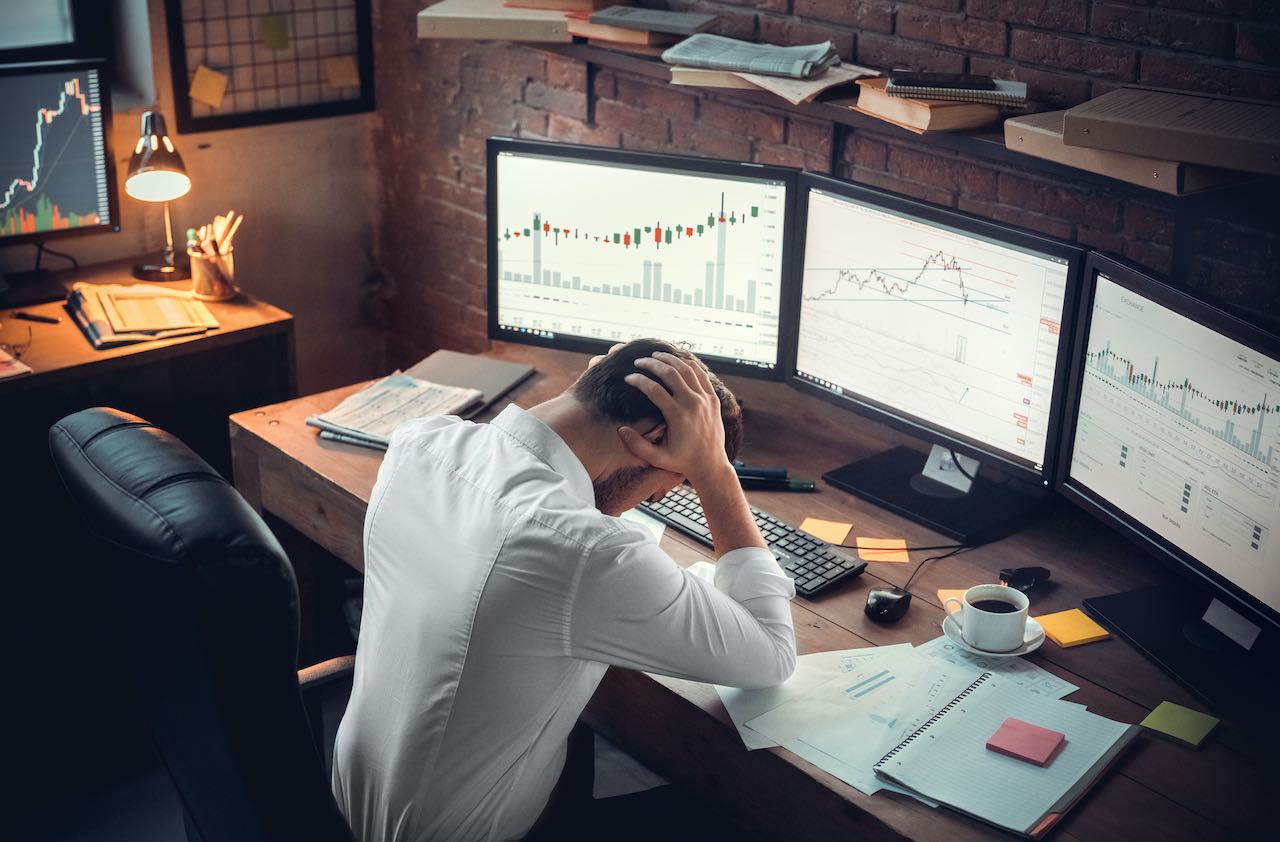Goldberg's Picks: The 6 Best Exchange-Traded Funds for 2012
Funds that hold mega-cap, high-quality stocks are poised to do well. But don't give up on emerging markets.

Stocks of high-quality, blue-chip companies led all stock categories -- domestic and foreign -- in 2011, and I think they'll continue to do so this year. So in picking exchange-traded funds for 2012, I like those that focus on huge companies that have sustainable competitive advantages, boast strong balance sheets and pay dividends.
Last year's results mark a reversal of a long pattern of small- and midsize-company stocks topping their larger-capitalization brethren. Today, large caps are cheaper based on price-earnings ratios and other measures. What's more, blue chips should hold up better if the euro-zone crisis boils over.
Before I reveal my picks, a quick review of ETF basics: ETFs are simply mutual funds that trade on the stock exchanges. Most are index funds. ETFs are usually cheaper than other funds. I favor Vanguard ETFs because they're often the cheapest and because Vanguard has a long and distinguished record of running index funds. ETFs from iShares are my second choice because they're typically the next cheapest.

Sign up for Kiplinger’s Free E-Newsletters
Profit and prosper with the best of expert advice on investing, taxes, retirement, personal finance and more - straight to your e-mail.
Profit and prosper with the best of expert advice - straight to your e-mail.
Vanguard Dividend Appreciation (symbol VIG) is my single favorite ETF for 2012. It tracks the Mergent Dividend Achievers Select index, which tracks stocks of companies that have increased their dividends at least ten years in a row. Mergent screens out stocks of small firms, as well as companies that may not be able to keep hiking their dividends. What's left is a portfolio of America's top brands, including McDonald's, International Business Machines, Coca-Cola and Procter & Gamble. More than half of the ETF's assets are in consumer staples and industrials. The average P/E of the ETF's 127 stocks is just 12, based on analysts' estimated 2012 earnings.
By the standards of 2011's mediocre, sometimes harrowing stock market performance, VIG had a great year, returning 6.1%. That beat Standard & Poor's 500-stock index's 2.1% return by 4 percentage points. Over the past five years, the ETF gained an annualized 2.4%, compared with a 0.3% annualized loss for the S&P 500 (all returns are through the end of 2011). Yet, thanks to the ETF's focus on dividends and quality, it has been 13% less volatile than the S&P 500. Incidentally, you shouldn't confuse a rising-dividend strategy with a high-income approach. VIG yields 2.3%, little more than the S&P 500's yield. The fund's annual expense ratio is just 0.18%.
After loading up on dividend-paying stocks, look for just plain large companies. You get nothing but the nation's largest firms with iShares Morningstar Large Core Index (JKD). The average market value (share price times number of shares outstanding) of the fund's 95 stocks is $62 billion, compared with $36 billion for the S&P 500. One-third of the ETF's assets are in consumer-staples companies, and the average P/E of its holdings is 13.5. The fund, which returned 3.3% last year, charges annual expenses of 0.20%.
Europe is on the brink of disaster, and Japan seems a perpetual mess. Still, you can't neglect foreign stocks. For stocks in developed markets, Vanguard MSCI EAFE ETF (VEA) is a fine choice, with an expense ratio of just 0.12%. The silver lining for investors in developed foreign markets is that stock prices have fallen as the euro-zone crisis has deepened. The average P/E of the 909 stocks in VEA is just 10, and the ETF yields a healthy 3.4%. Nearly two-thirds of the fund's assets are in Europe; the rest are in Asia.
Emerging-markets stocks got creamed last year. The MSCI Emerging Markets index tumbled 18.2%, thanks to jitters over a slowdown in China's torrid growth and concerns that Europe's debt crisis could trigger a decline in demand for both commodities and finished goods from developing nations.
The notion that emerging markets will decouple from the rest of the global economy anytime soon is ridiculous. But these are still the world's fastest-growing economies. When investors regain confidence in the health of the global economy, emerging-markets stocks will thrive. The average P/E of the stocks in the MSCI Emerging Markets index is 10.
Vanguard MSCI Emerging Markets Index ETF (VWO) is a better choice for this volatile part of the global economy than any of the actively managed no-load emerging-markets funds. The ETF was launched in 2005, but its mutual fund clone, Vanguard Emerging Markets Stock Index (VEIEX), returned an annualized 13.4% over the past ten years. Expenses are 0.22% annually. Nearly 60% of the fund's assets are in Asia, 22% are in Latin America, 18% are in Europe, Africa and the Middle East.
For bond investors, consider iShares S&P National AMT-Free Muni Bond ETF (MUB). The fund's tax-exempt yield is 2.5%. That's the equivalent of 3.7% for a taxpayer in the 33% federal bracket. If yields on similar bonds rise by one percentage point, this ETF should lose about 7% in price, so it does have some risk. But I'd be surprised to see rates rise much anytime soon. Its bonds' average credit quality is single-A, and the fund's annual expense ratio is 0.25%.
In tax-deferred accounts, use Vanguard Intermediate-Term Corporate Bond Index ETF (VCIT). One of its attributes is that it owns virtually no low-yielding Treasuries. The ETF invests in high-quality corporate bonds and yields 3.8%. If rates rise one percentage point, the fund's price should fall 6%. Expenses are just 0.14%.
As for how to allocate your money among these ETFs: An investor with an average tolerance for risk should put 15% in the Vanguard dividend ETF, 20% in the iShares large-cap ETF, 20% in the foreign developed-markets ETF and 15% in the emerging-markets ETF. I'd put 30% into the bond ETFs.
Steven T. Goldberg (bio) is an investment adviser in the Washington, D.C. area.
Get Kiplinger Today newsletter — free
Profit and prosper with the best of Kiplinger's advice on investing, taxes, retirement, personal finance and much more. Delivered daily. Enter your email in the box and click Sign Me Up.

-
 Stock Market Today: Stocks Soar on China Trade Talk Hopes
Stock Market Today: Stocks Soar on China Trade Talk HopesTreasury Secretary Bessent said current U.S.-China trade relations are unsustainable and signaled hopes for negotiations.
By Karee Venema
-
 2026 Disney Dining Plan Returns: Free Dining for Kids & Resort Benefits
2026 Disney Dining Plan Returns: Free Dining for Kids & Resort BenefitsPlan your 2026 Walt Disney World vacation now. Learn about the returning Disney Dining Plan, how kids aged three to nine eat free, and the exclusive benefits of staying at a Disney Resort hotel.
By Carla Ayers
-
 ESG Gives Russia the Cold Shoulder, Too
ESG Gives Russia the Cold Shoulder, TooESG MSCI jumped on the Russia dogpile this week, reducing the country's ESG government rating to the lowest possible level.
By Ellen Kennedy
-
 Morningstar Fund Ratings Adopt a Stricter Curve
Morningstar Fund Ratings Adopt a Stricter Curveinvesting Morningstar is in the middle of revamping its fund analysts' methodology. Can they beat the indices?
By Steven Goldberg
-
 Market Timing: The Importance of Doing Nothing
Market Timing: The Importance of Doing NothingInvestor Psychology Investors, as a whole, actually earn less than the funds that they invest in. Here’s how to avoid that fate.
By Steven Goldberg
-
 Commission-Free Trades: A Bad Deal for Investors
Commission-Free Trades: A Bad Deal for Investorsinvesting Four of the biggest online brokers just cut their commissions to $0 per transaction. Be careful, or you could be a big loser.
By Steven Goldberg
-
 Vanguard Dividend Growth Reopens. Enter at Will.
Vanguard Dividend Growth Reopens. Enter at Will.investing Why you should consider investing in this terrific fund now.
By Steven Goldberg
-
 Health Care Stocks: Buy Them While They're Down
Health Care Stocks: Buy Them While They're Downinvesting Why this sector should outperform for years to come
By Steven Goldberg
-
 Buy Marijuana Stocks Now? You'd Have to Be Stoned.
Buy Marijuana Stocks Now? You'd Have to Be Stoned.stocks Don't let your investment dollars go to pot
By Steven Goldberg
-
 4 Valuable Lessons From the 10-Year Bull Market
4 Valuable Lessons From the 10-Year Bull MarketInvestor Psychology Anything can happen next, so you must be mentally prepared.
By Steven Goldberg